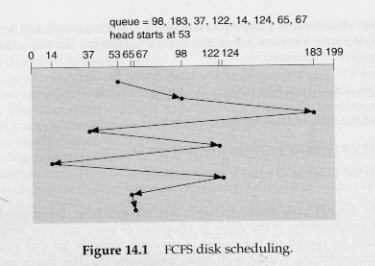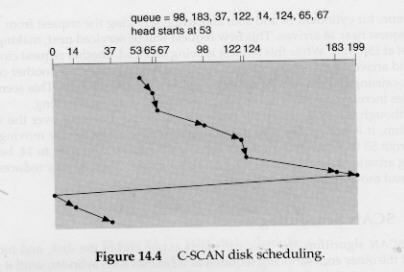CS 3733 Operating Systems Notes: Disk Head Scheduling Algorithms
This material is taken from Silberschatz, section 14.2, pp 492-498.
- Recall that a disk drive consists of a number of platters, each having one
or two surfaces.
- Each surface is divided into tracks and each track is divided into
sectors.
- The drive has one head per surface and the heads move together.
- For a given position of the heads, the collection of sectors that can be
accessed is called a cylinder.
- There are three parts to accessing a sector on the disk:
- Move the head to the appropriate cylinder - seek time
- Wait for the desired sector to rotate under the head -
rotational latency
- Transfer the data - transfer time
- Since I/O is slow, disk operations are usually queued.
- Example from book:
queued requests to cylinders:
98, 183, 37, 122, 14, 124, 65, 67
- In what order should these accesses be made?
- FCFS: first-come, first-served
- SSTF: shortest seek time first
- SCAN and LOOK
- C-SCAN and C-LOOK





A simualtor
As in the process scheduling simulator, perform experiments consisting of
runs.
Look at the simulator running the above problem
here.









